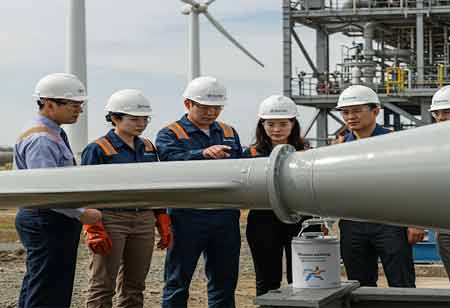Thank you for Subscribing to Construction Business Review Weekly Brief
Specials
- Apartment and Condominium Contractors Canada
- Decking Canada
- Architectural Glass Europe
- MEP APAC
- Construction Saudi Arabia
- German Apartment and Condominium Contractors
- Construction Law APAC
- Outdoor Construction
- Foundation Construction Canada
- MEP Canada
- Kitchen and Bath
- Cold Storage Construction APAC
- Precast Concrete Europe
- Construction Staffing Europe
- Pre-Construction Services
- Flooring System APAC
- Scaffolding Canada
- Swimming Pool Construction Canada
- Construction Management Canada
- Cold Storage Construction Canada
- Flooring Systems Europe
- Residential Construction
- Concrete Canada
- Construction Cladding Europe
- Construction Cladding APAC
- Concretes, Aggregates and Construction Materials APAC
- Concretes, Aggregates and Construction Materials Europe
- Commercial Contractors Europe
- Commercial Contractors APAC
- Dummy
- Construction Insulation, Coating and Waterproofing
- Construction Management APAC
- Landscaping Canada
- Construction Coating Europe
- Construction Tech Startups Europe
- Insulation Services Europe
- Mechanical Contractor Canada
- Mould Remediation and Testing Europe
- Swimming Pool Construction APAC
- Building Sealing Solutions Europe
- Construction Engineering Services
- Mechanical Electrical and Plumbing
- Roofing Systems Europe
- Architectural Glass APAC
- Startups APAC
- Construction Forensic and Owners Representative
- Flooring System
- Waterproofing APAC
- Wall Systems
- Safety and Compliance Europe
- Construction Equipment
- Modular and Prefab Construction
- Architectural Glass
- Construction MENA
- Construction Demolition and Recycling Europe
- Modular Construction Europe
- Construction Interiors
- Steel Building APAC
- HVAC
- Doors and windows
- Modular Construction APAC
- Building Information Modeling APAC
- Sustainable Construction APAC
- Building Restoration and Maintenance
- Commercial Contractors
- Specialty Construction
- Construction Engineering Canada
- Construction Engineering MENA
- Modular Construction Canada
- Construction Demolition Canada
- Roofing and Siding Systems
- Construction Latam
- Construction Staffing
- Roofing Systems APAC
- Construction Consulting
- Steel Building Europe
- Construction Demolition and Recycling APAC
- Safety and Compliance APAC
- Concretes, Aggregates and Construction Materials
- Construction Cladding
Technology's Contribution to the Construction Sector
Construction organisations employ a variety of equipment, software, applications, and tools during the many stages of a construction project.

By
Construction Business Review | Friday, April 14, 2023
Stay ahead of the industry with exclusive feature stories on the top companies, expert insights and the latest news delivered straight to your inbox. Subscribe today.
Technology in construction is advancing rapidly and changing the way building projects run. Major technological advancements have improved productivity and also made the work environment safer for employees.
FREMONT, CA: Construction organisations employ a variety of equipment, software, applications, and tools during the many stages of a construction project. These devices aid businesses in increasing the effectiveness of their procedures and operations. Automated and semi-automated construction equipment, bid management software, autonomous heavy equipment, numerous mobile applications, robotics, virtual reality (VR), machine learning (ML), and artificial intelligence (AI) are just a few of the diverse components that make up construction technology.
Benefits Of Using Technology In Construction
Increases productivity: Each project in construction is unique from the next. This hinders production by making it very difficult to standardise the numerous procedures. The use of technology, including AI and ML, aids in the automation and simplification of numerous operations, increasing productivity.
Improves safety: The safety of the workforce is a major concern in the construction sector. Utilising tools like virtual reality, sensors, and wearables can significantly improve workplace safety and lower the risk of major injuries. To guarantee a safe working environment, construction businesses can use these technologies to successfully train their staff members and then keep track of both their health and the site's general security.
Helps to manage labour shortages: The lack of qualified workers is a persistent problem for the building industry. Using technology to manage these shortages can be quite beneficial. Drones, robots, and autonomous heavy equipment can help construction organisations perform any significant physical task with fewer workers. Technology can also assist them by giving them access to the most recent candidate database, which they can utilise to hire new hires as and when necessary.
Ensures better collaboration: Given the dimensions of the sites and the number of decision-makers involved in construction projects, collaboration is a significant barrier. Utilising tools created expressly for communication and collaboration promotes quicker and better decision-making. For the project to function well, such applications also ensure that any new information reaches the various stakeholders in real time.
Examples Of Construction Technology
The numerous facets of a building project can now be managed with the aid of various mobile applications and software. Different procedures, including scheduling, project management, and back-office management, are streamlined with the use of this software. Most of these applications are often cloud-based, which enables real-time sharing of updates with many stakeholders. The team's teamwork and communication are enhanced as a result.
Building projects often use ML and AI to enhance the vast volume of available data and gain insight into the results. These insights improve decision-making, increase productivity, and lower security threats. Businesses can use AI to pinpoint the parts of a process where time is wasted.





